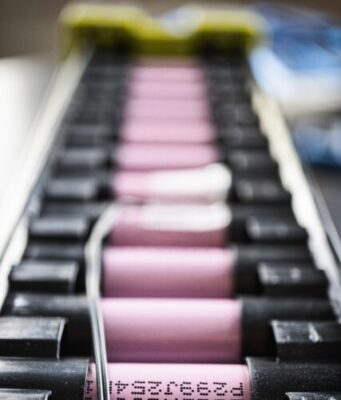University of Colorado Boulder researchers have developed a new type of malleable, self-healing and fully recyclable "electronic skin" that has applications ranging from robotics and prosthetic development to better biomedical devices.
Electronic skin, known as e-skin, is a thin, translucent...
A study published in the Journal of Biological Chemistry is the first to describe a signaling pathway that affects communication -- a process called quorum sensing -- between Streptococcus bacteria cells.
This type of bacterium is responsible for illnesses like strep throat,...
Lennon and McCartney. Abbott and Costello. Peanut butter and jelly.
Think of one half of any famous duo, and the other half likely comes to mind. Not only do they complement each other, but together they work better.
The same is...
New research has demonstrated how the nano-architecture of a silkworm's fiber causes "Anderson localization of light," a discovery that could lead to various innovations and a better understanding of light transport and heat transfer.
The discovery also could help create...
Nanoengineers at the University of California San Diego have developed an energy-efficient recycling process that restores used cathodes from spent lithium ion batteries and makes them work just as good as new. The process involves harvesting the degraded cathode...
A type of battery first invented nearly five decades ago could catapult to the forefront of energy storage technologies, thanks to a new finding by researchers at MIT and other institutions. The battery, based on electrodes made of sodium...
Food scientist Lili He and colleagues at the University of Massachusetts Amherst report that they have developed a new, rapid and low-cost method for detecting bacteria in water or a food sample. Once commercially available, it should be useful...
Rutgers scientists have found the "Legos of life" - four core chemical structures that can be stacked together to build the myriad proteins inside every organism - after smashing and dissecting nearly 10,000 proteins to understand their component parts.
The...
Fuel cells have the potential to be a clean and efficient way to run cars, computers, and power stations, but the cost of producing them is limiting their use. That's because a key component of the most common fuel...
Advancements in a fuel cell technology powered by solid carbon could make electricity generation from resources such as coal and biomass cleaner and more efficient, according to a new paper published by Idaho National Laboratory researchers.
The fuel cell design...
A dawning field of research, artificial biology, is working toward creating a genuinely new organism. At Princeton, chemistry professor Michael Hecht and the researchers in his lab are designing and building proteins that can fold and mimic the chemical processes that...


















